Common Eastern Bumblebee
American Bumble Bee
Southern Plains Bumblebee
Common Long-Horned Bee
Paper Wasp
Wasps get a bad rap. They sting, and they not as glamorous as a bee that makes honey.
Wasps matter a lot because they play an important role in a healthy environment. Paper Wasps (Polistes dominulus), also known as Umbrella Wasps, are predatory and are at the top of the invertebrate food chain. Along with other wasps, Paper Wasps protect lower invertebrate species and plants. They work as generalist pollinators, like bees, to move pollen from one plant to another.
Paper wasps are social and will create a nest each year. The queen will emerge from the ground where she spends the winter and will build a nest using chewed wood pulp. The first generation of wasps she produces consists of worker wasps who feed on nectar. She will then concentrate on laying more eggs. The worker wasps feed the larva masticated caterpillars, flies, and other residential and agricultural pests. Vegetable gardeners love these flying predator Paper Wasps since they provide free and natural pest control. Like a bee or spider, the sting can be life-threatening to those who are allergic. However, Paper Wasps usually do not attack unless they are provoked or feel threatened. Unlike the honey bee, the Paper Wasp’s stingers are smooth and can sting more than once. Running and quick movements can be mistaken as an attack on the wasp. When you encounter a Paper Wasp, raise your hands slowly to protect your face, and walk away slowly.
According to Seirian Sumner, a senior lecturer in Behavioral Biology at the University of Bristol, ‘They may be a nuisance on a sunny day – but a world without wasps would be an ecological and economic disaster.’
Photo Credit: Dan Kon
Southeastern Blueberry Bee
Here’s something to buzz about. These Southern Blueberry Bees (Habropoda laboriosa) use a technique called “buzz pollination,” in which their buzzing allows tightly held pollen on the anthers of rabbiteye blueberries to loosen. These bees are most active in spring and are easily recognized by their large size and loud buzzing. Of course, they don’t just eat blueberry pollen. Here they are on some scarlet milkweed. You can attract these and other native bees by using native flowering plants in your landscaping.
Red and Black Mason Wasp
While everyone loves honeybees, wasps get a bad reputation. Although both help as pollinators, both are capable of stinging. Wasps, such as this Red and Black Mason Wasp (Pachodynerus erynnis), can usually be harmless.
Mason wasps are solitary, and unless provoked, they couldn’t care less about humans. Females will build nests made out of debris and mud. Each nest contains multiple compartments containing an egg and food source for the larvae to feed on once they hatch. Larval food consists of several garden pests such as cutworms and armyworms. Adults feed on nectar from flowers.
Sweat Bee
Sweat Bees (Halictidae) are also known as Halictid Bees. They vary greatly in appearance. The majority are dull to metallic black, with the remaining species being metallic green, blue or purple. These bees do not sweat; they are attracted to human sweat. These non-aggressive Bees use the salt from human sweat for their nutritional needs. Sweat bees are important pollinators for many wildflowers and crops, including stone fruits, pears, and field crops. Halictids typically nest in bare soil located in a sunny location. Most halictids nest underground, but some will nest in rotting wood. The bees help speed the decay and decomposition of deadfall trees. In the spring or summer, the female mates. She then begins digging a nest and providing cells with pollen and nectar. Cells containing an egg or larva are lined with a waxy substance, which is extruded from a gland on the underside of the bee’s abdomen. In each cell, a single egg is laid. When the larva hatches, it eats the pollen provided. Once that is eaten, it must become self-sufficient and find its own food source. Males will usually resemble the female of the same species, but the male sweat bee does not have an area of long, dense hairs on its hind legs used for carrying pollen. They may have a yellow spot below the antennae on their face. As these bees feed on nectar and pollen, they are pollinating in the process. These technicolor bees do add a flash of brilliance to a spring garden.
Red Velvet Ant
The Red Velvet Ant (Dasymutilla occidentalis) – the name is a bit misleading. These fuzzy little insects aren’t actually ants but rather wasps. The males have wings and can fly but are harmless. The females, however, can deliver a powerful and painful sting. Fortunately, they do not have wings and can easily be avoided. These differences in sexes are called sexual dimorphism.
These wasps create burrows in the ground that look like small holes. Chances are you have walked by the burrows without noticing.
Thread Waisted Wasp
The Thread-Waisted Wasp (Ammophila pictipennis) is an ambush predator that will attack small worms, spiders, or other insects. It carries the prey back to the nest made out of packed dirt and stores it with its eggs. When the eggs hatch, the larvae feed on the treat left by the mother. Adults are excellent pollinators and feed on the nectar from flowering plants, such as this firebush, or small insects, including those pesky aphids. They are relatively docile, but if they feel threatened will attack defensively. However, they would much rather save their energy for something they can eat.
Southern Carpenter Bee
What could be nicer than a native pollinator and a native flower? This Southern Carpenter Bee (Xylocopa micans) is stopping by flowering pennyroyal (Piloblephis rigida). The carpenter bee is a solitary bee that lives for one year. They nest in the wood of dead trees. Like other pollinators, carpenter bees are important to the survival of many species of plants. Pennyroyal is a member of the mint family and can be found in sunny areas of sandy soil along forest edges. It can be brewed into a tea as well.

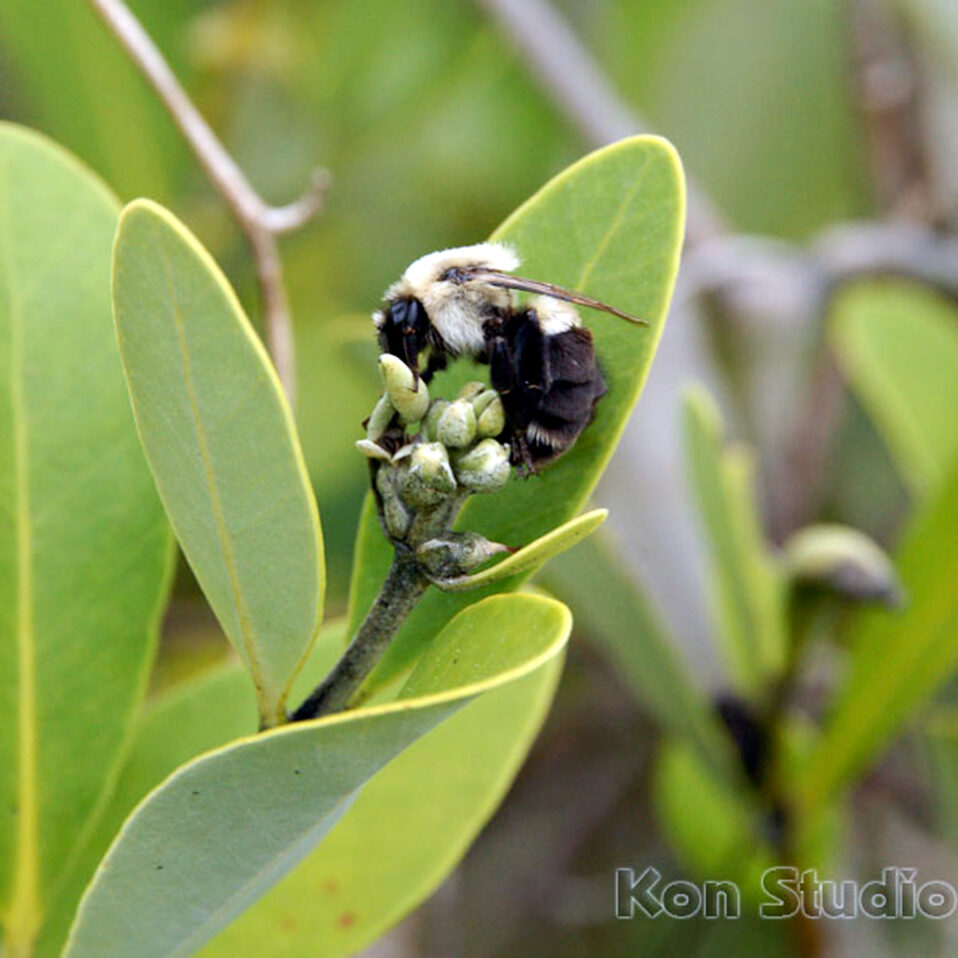
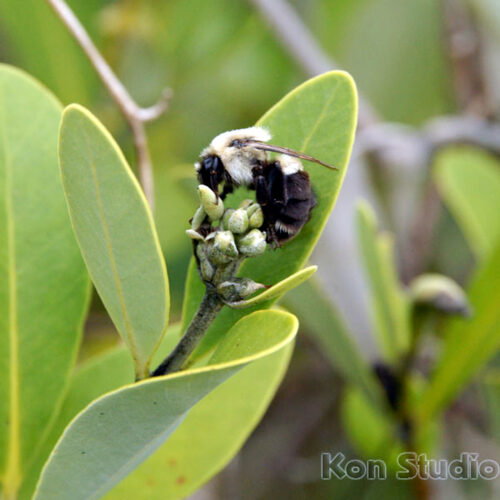
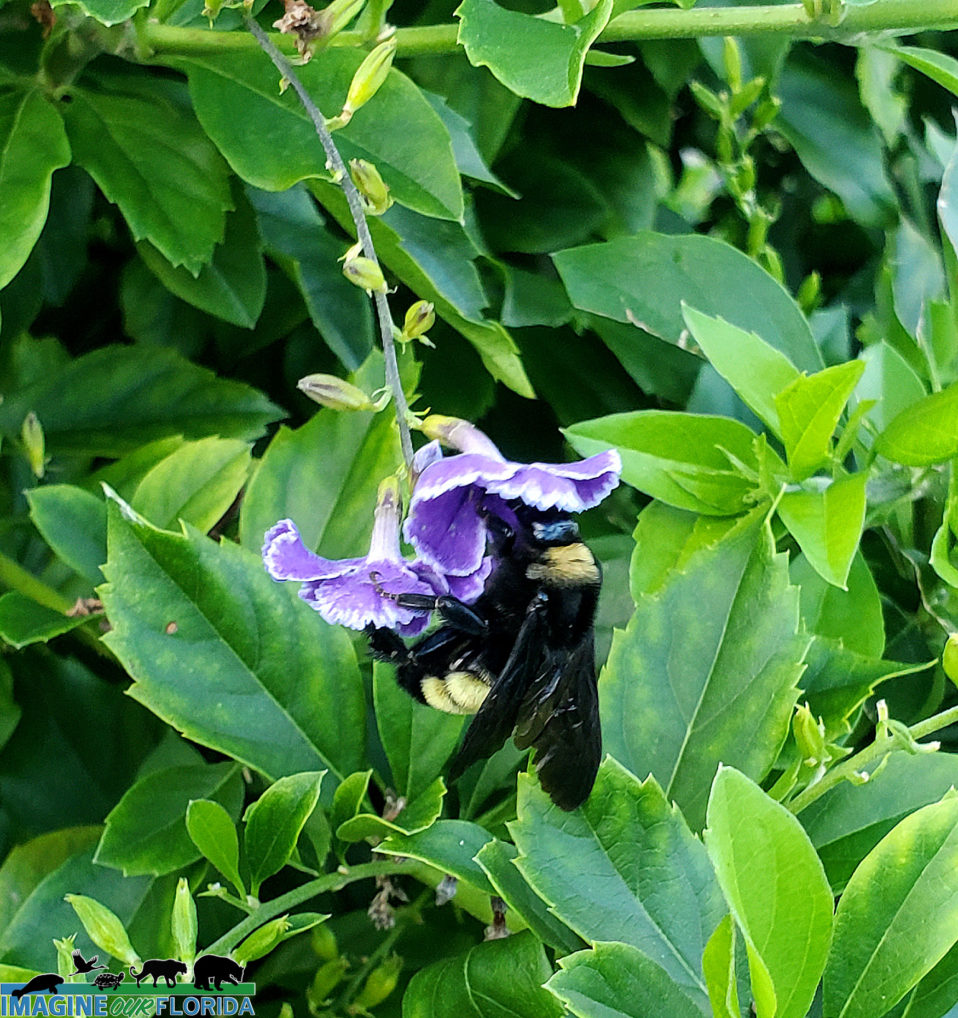
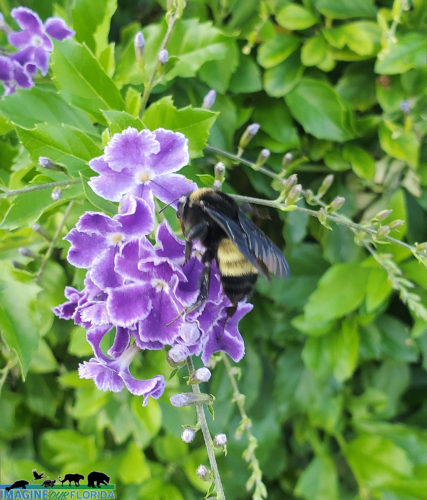
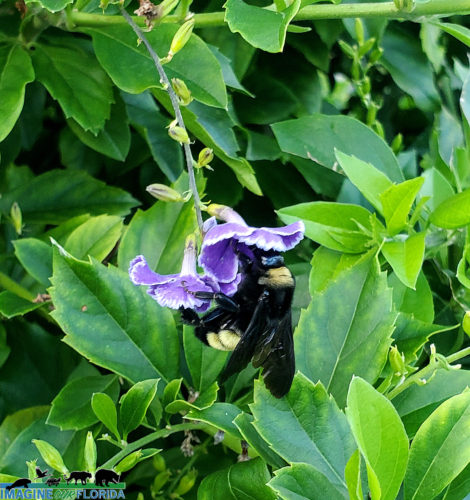
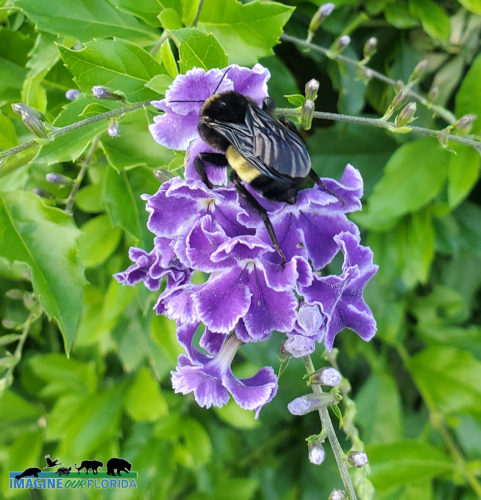
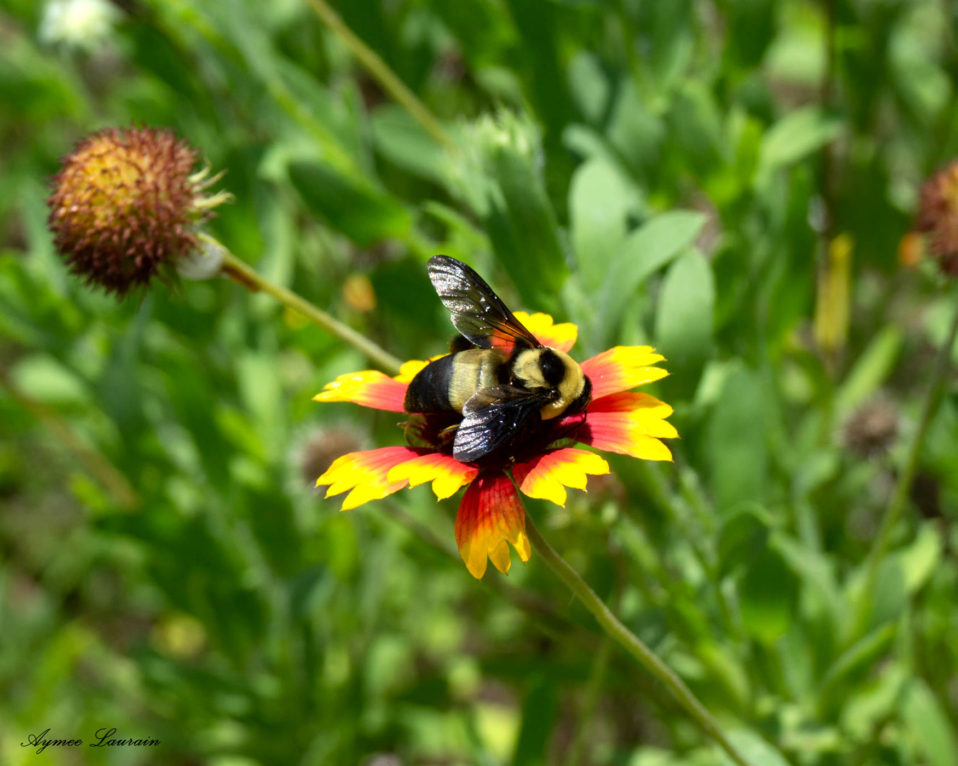
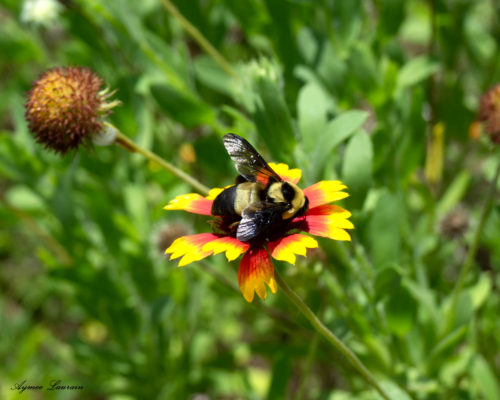
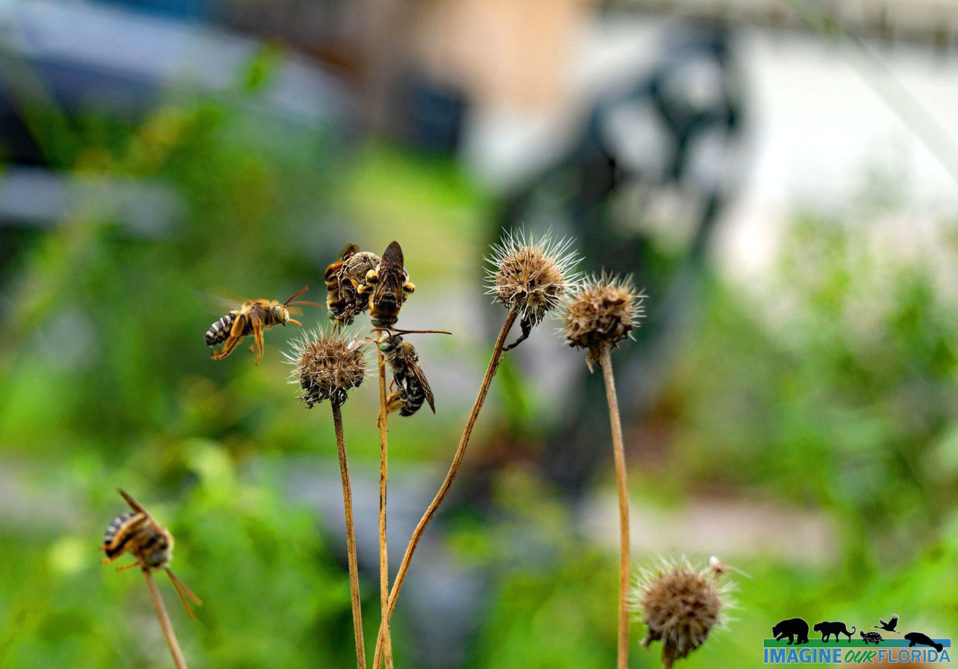
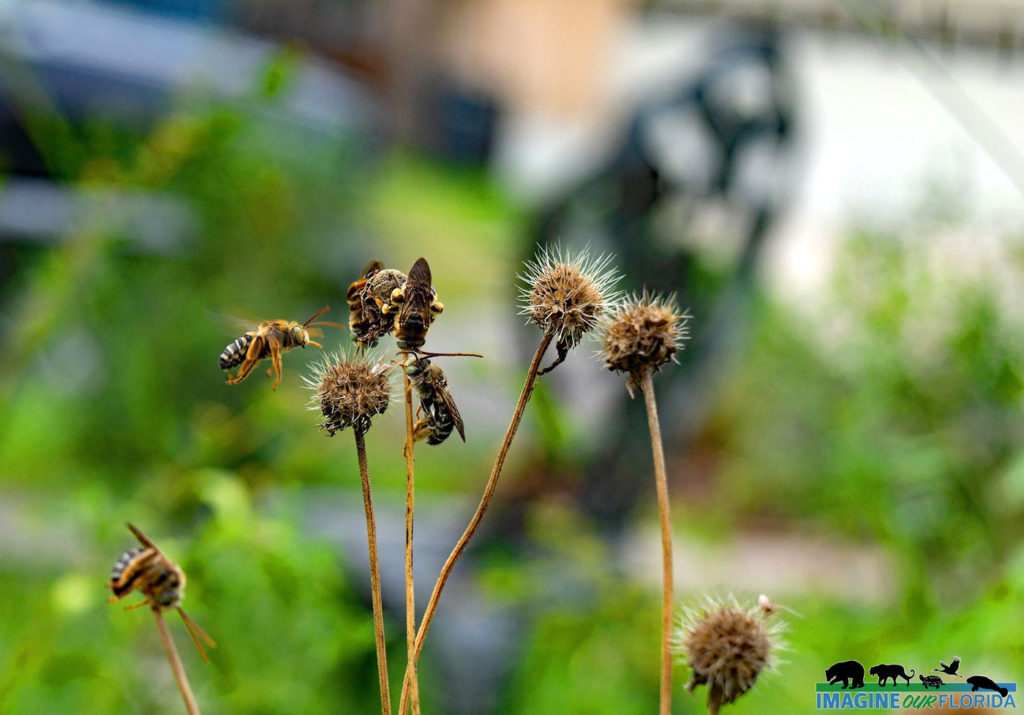
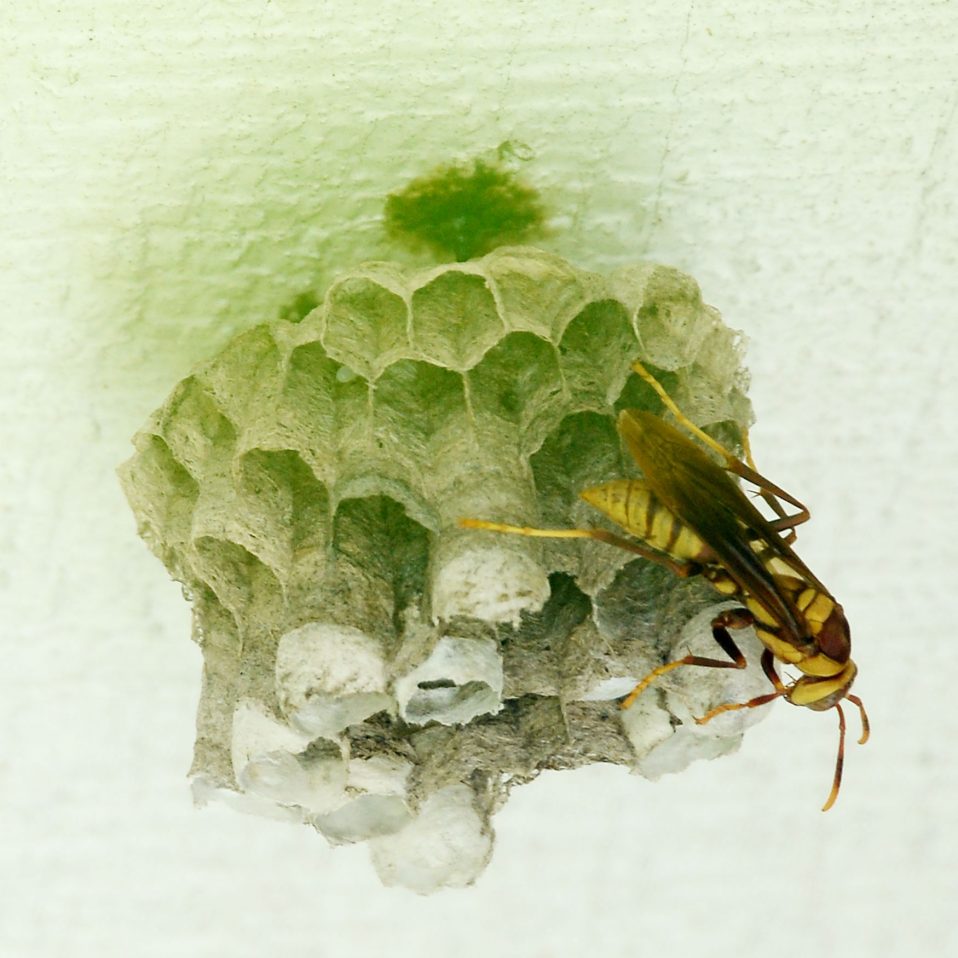
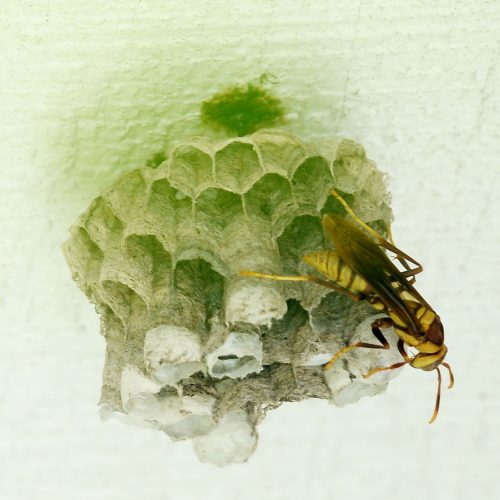
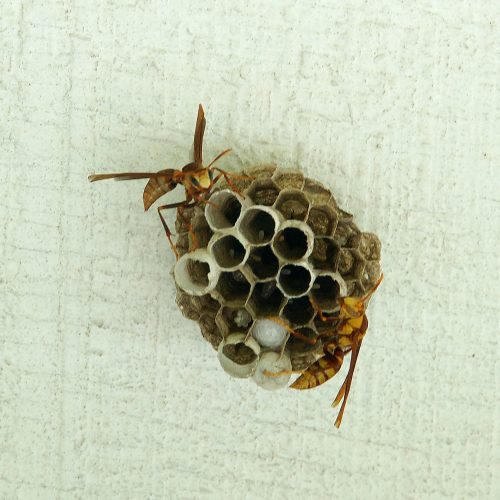
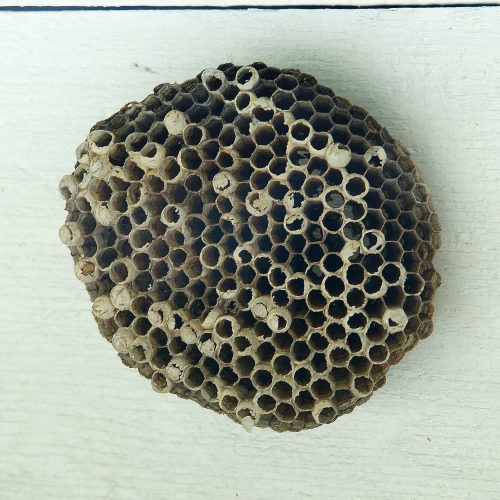
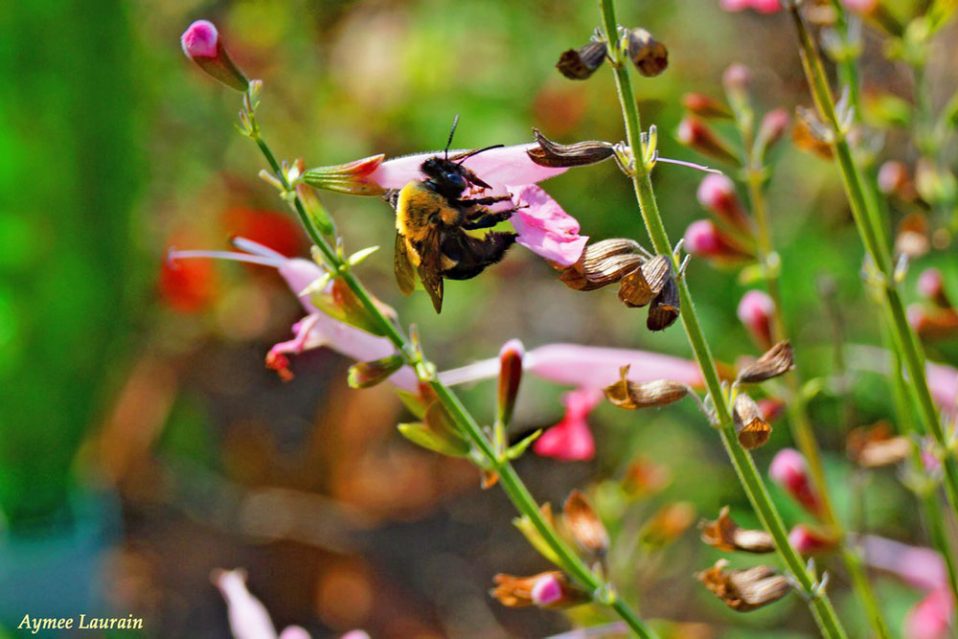
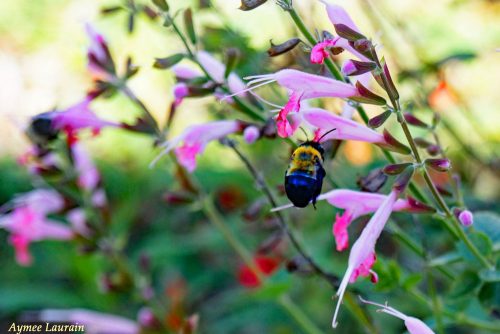
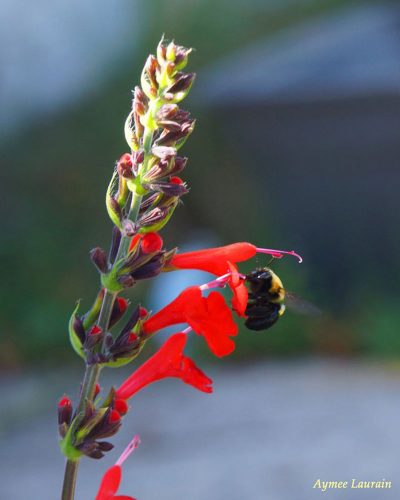
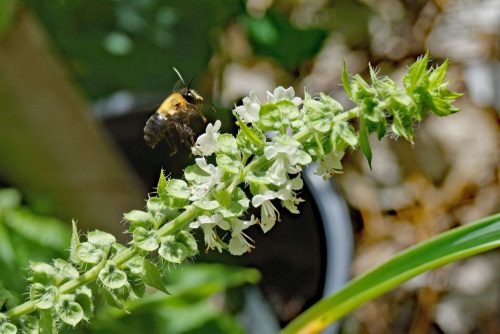
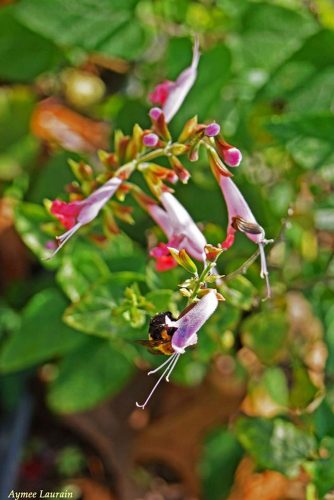
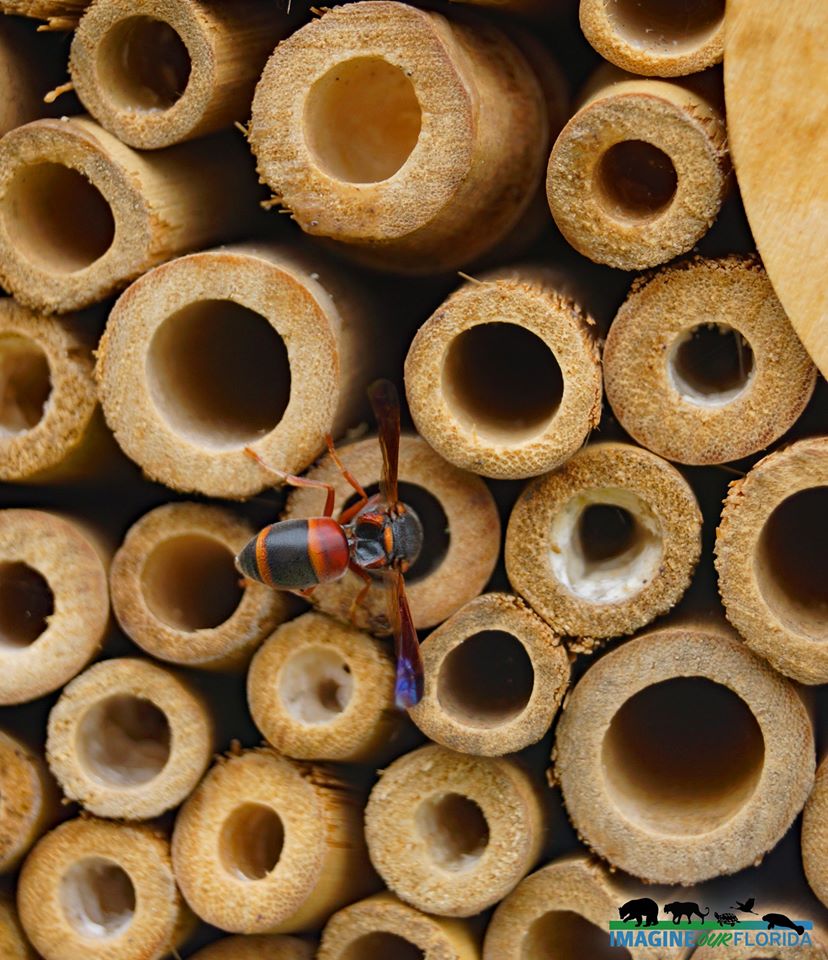
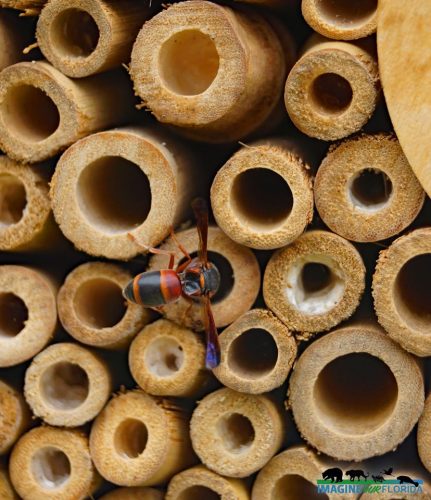
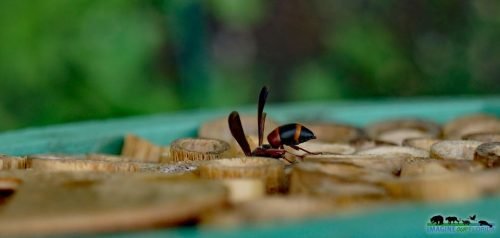
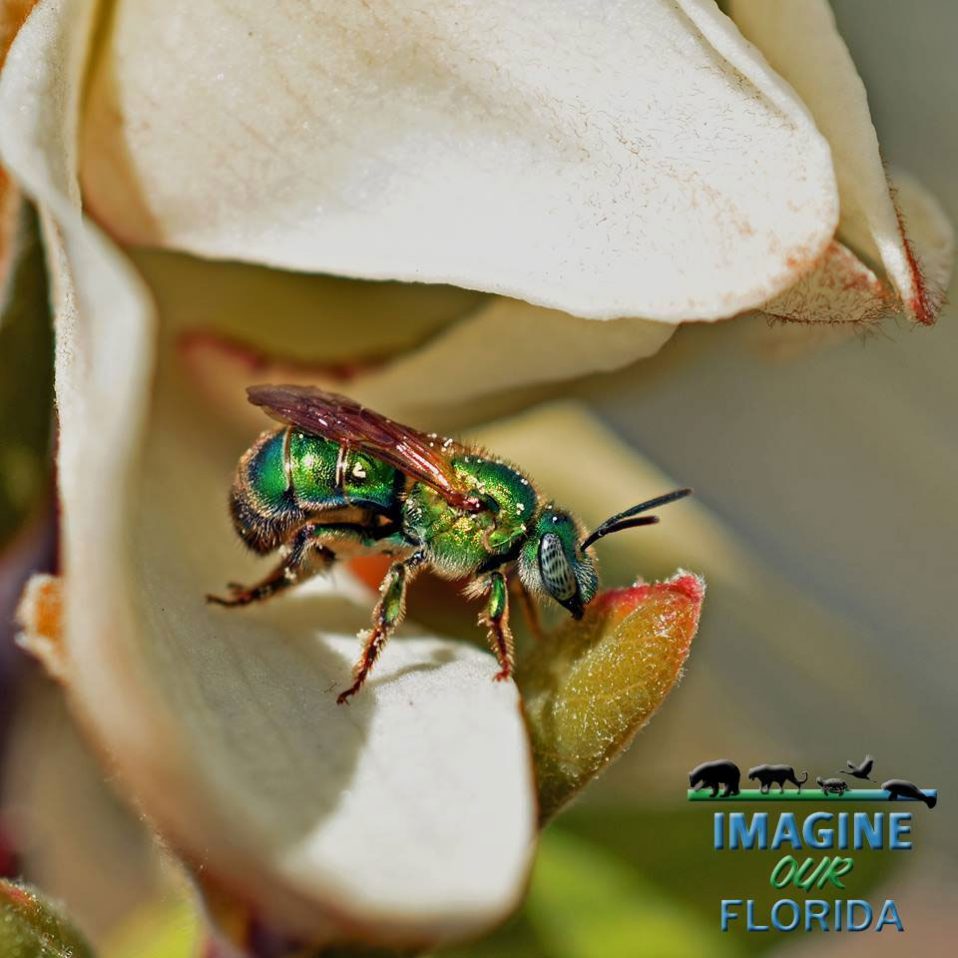
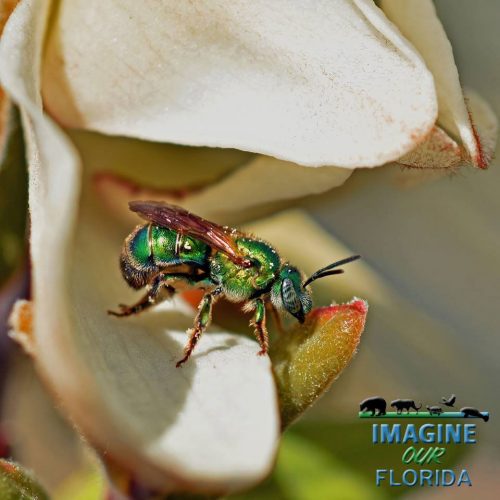
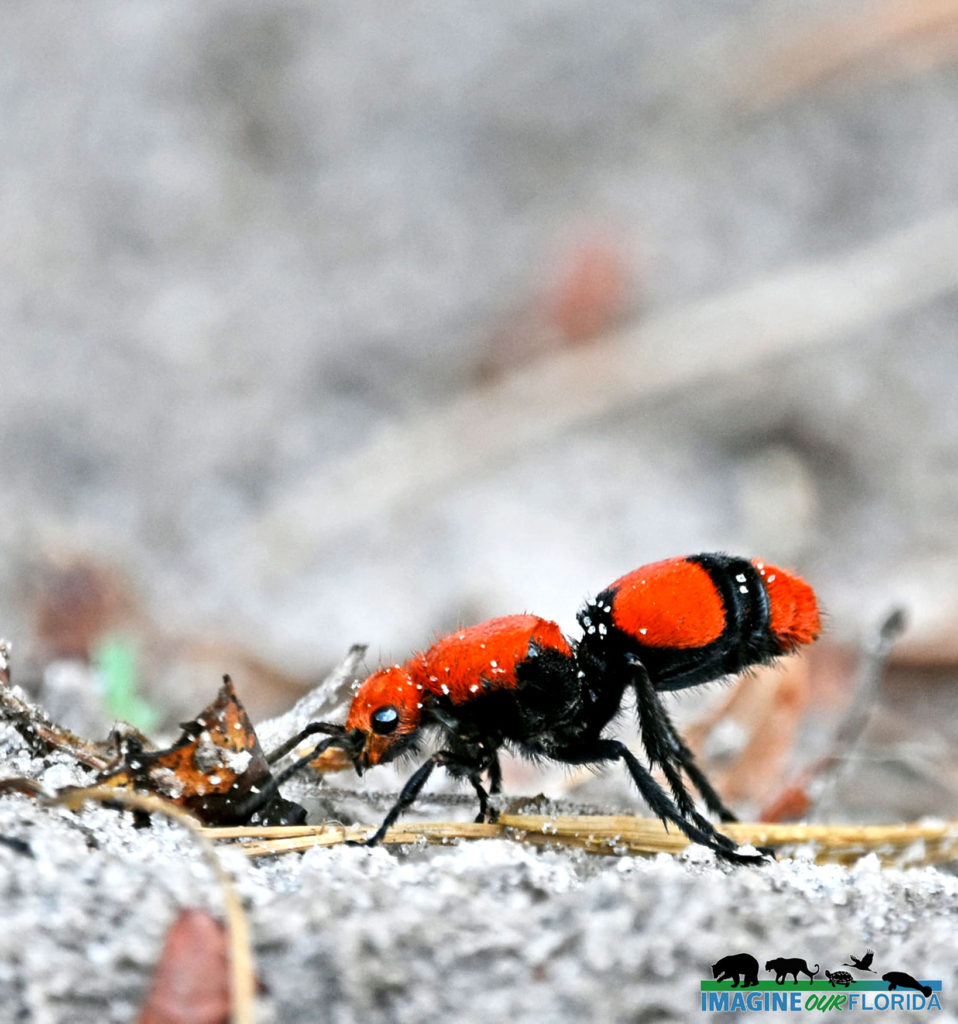
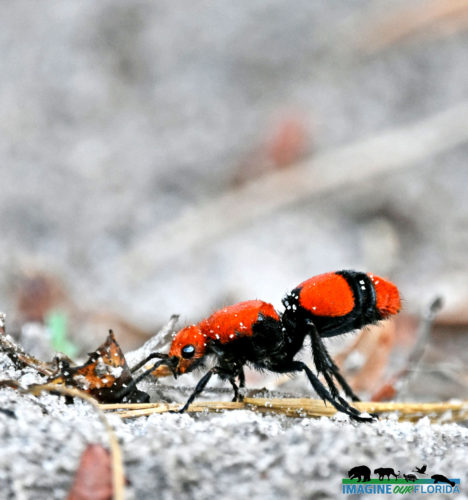
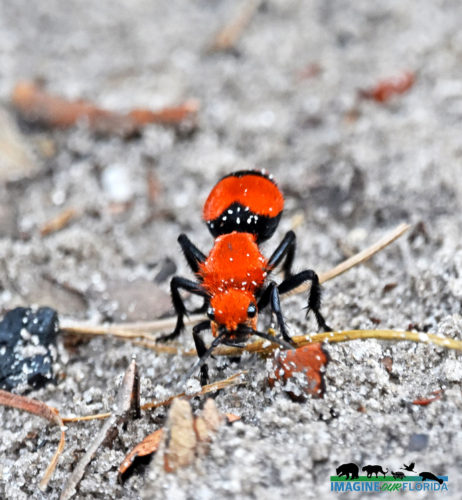
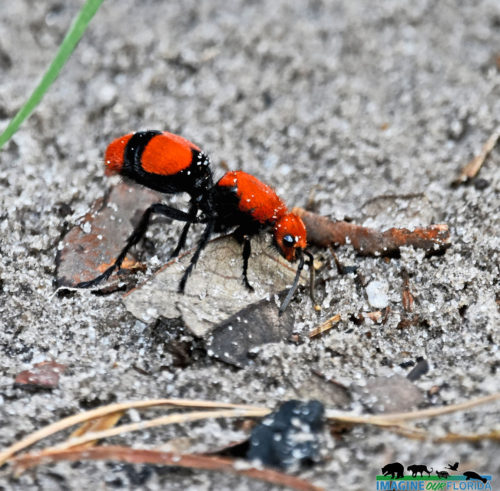
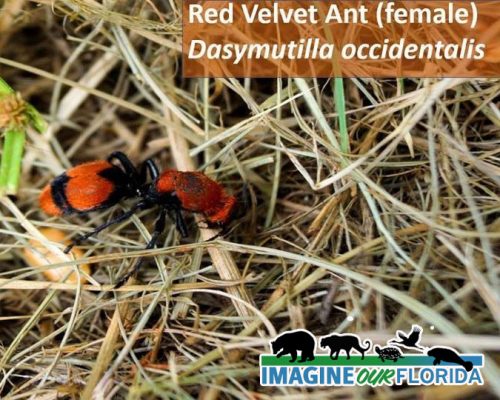
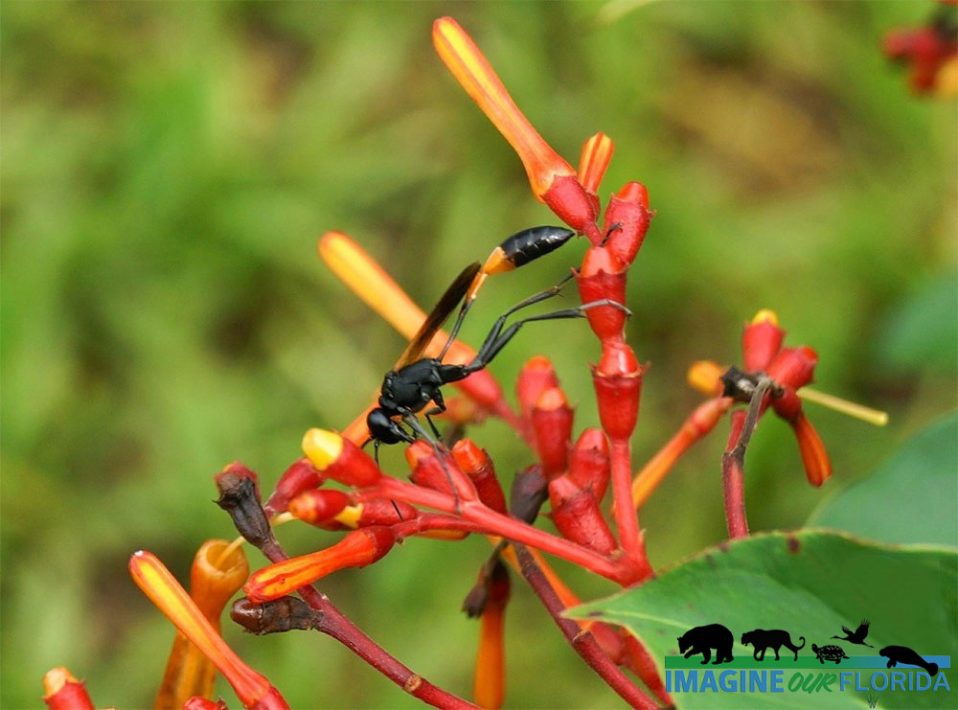

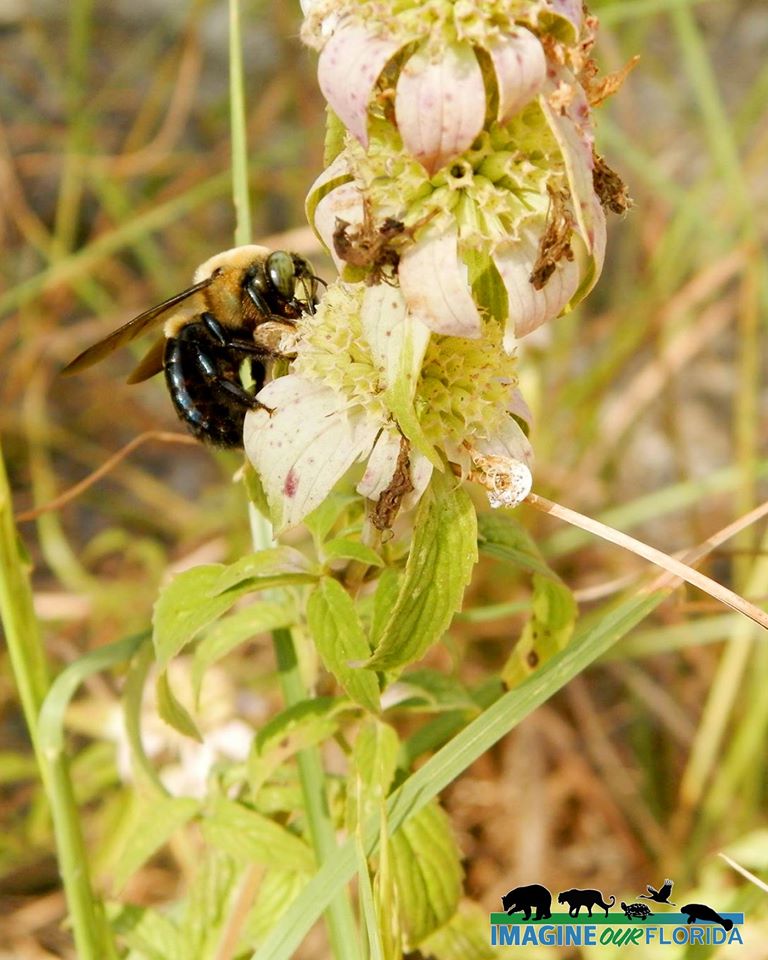
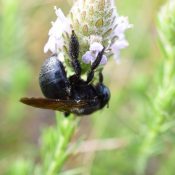
Recent Comments